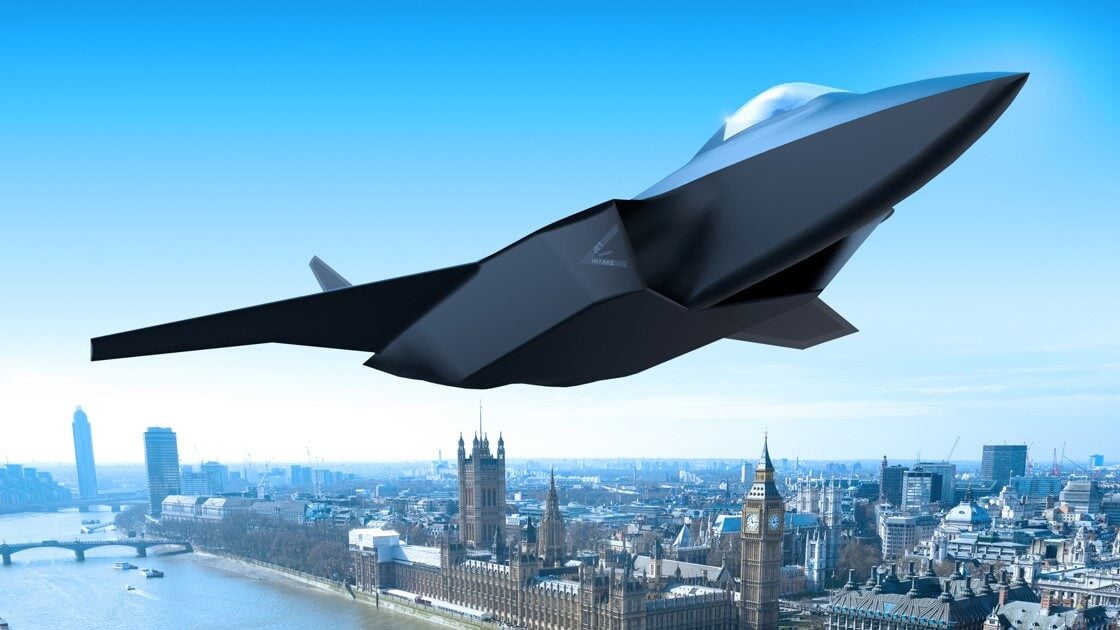More than a month after it was first announced, the Global Combat Air Program (GCAP) is fast catching pace with Italian industrial partners officially cementing their role in developing the next-generation combat aircraft.
The Global Combat Air Program is a multilateral initiative by the United Kingdom, Italy, and Japan to develop a sixth-generation stealth fighter jet akin to American Next Generation Air Dominance (NGAD) and the Franco-German Future Combat Air System (FCAS) programs.
It was announced in December 2022 after merging existing next-gen fighter programs.
Italy’s industry representative for GCAP, Leonardo, announced on January 26 that the concept, assessment, and demonstration efforts to support Italy’s participation in the program are now underway.
It also added that it had been joined by partners like Elettronica, Avio Aero, and MBDA Italia in progressing technology development for the project.
Leonardo said in a statement: “The team of Italian companies that will participate in the development of the new GCAP have signed a contract to support the Italian Ministry of Defense (MoD) in the program’s new concept and assessment phase and related demonstration activities.”
The industry representative also added that the industry would work with universities, research facilities, SMEs, and start-ups to exchange knowledge and develop skills at the national level in close coordination with the Italian Ministry of Defense.
Further, the MoD will be in charge of determining operational requirements and guiding technological advancement, with assistance from the industry.
?#PressRelease The team of Italian companies that will participate in the development of the new #GCAP have signed a contract to support the Italian Ministry of Defense in the programme’s new concept & assessment phase and related demonstration activities https://t.co/smGYtXxIYP pic.twitter.com/hIOosXAZcG
— Leonardo (@Leonardo_live) January 26, 2023
Italy has already set aside 6 billion Euros to assist the GCAP program. This money will be used to fund research and development projects that will enable the implementation of technology development initiatives in sectors of strategic importance.
Through this, the Italian industry will be able to participate in the development phases of the system-of-systems, as the sixth-generation program is popularly known.
The announcement of the Italian industry’s official participation in the program is also significant as a few days after the GCAP was announced in December 2022, the Italian defense minister dropped a bombshell on his counterparts and set an unexpected precondition for the program.
The Minister of Defense Guido Crosetto told the media that Italy must be treated equally in cooperation with Britain and Japan to produce the new fighter. He added that the country would decide how much to invest in the multi-billion dollar project after further specifics were established.
Crosetto said, “Italy can only continue along this path if it has the same weight as Japan and Britain on technology, research and later, if it comes to that, on the results,” while adding that he wanted a “33%-33%-33%” breakdown. These comments had previously created an impression that the program had hit a snag and that specifics were still being worked out.
The latest announcement by Leonardo may have heralded a new era in developing the sixth-generation fighter jet under the umbrella of the Global Combat Aircraft Program.
GCAP Is Taking Wings!
On December 9, 2022, the governments of Japan, the United Kingdom, and Italy announced that they would combine their formerly independent sixth-generation projects—the United Kingdom-led BAE Systems Tempest and the Japanese Mitsubishi F-X—to build and deploy a single fighter jet.
With their Global Combat Air Program, the three countries are specifically competing against the Future Combat Air System (FCAS) program, which is led by France, Germany, and Spain and is Europe’s main next-generation fighter development effort.
The design of the aircraft manufactured under the GCAP will be led by the British company BAE Systems PLC, the Japanese company Mitsubishi Heavy Industries, and the Italian defense company Leonardo, with participation from other defense manufacturers.
The goal is to equip the aircraft created under the global combat air program (GCAP) with modern sensors, unmanned aircraft, and advanced armaments. It is anticipated that the jet would be able to travel faster than the speed of sound and fire hypersonic weaponry.

Earlier, the Italian Defense Minister Crosetto emphasized that there shouldn’t be any limitations on working with the competing European program and that the GCAP should look for new partners, particularly in Europe. This proposal is already gaining steam as Sweden has expressed interest in joining the GCAP.
A contract between Japan and Sweden could allow the Scandinavian nation to participate in the new Global Combat Air Program (GCAP). The two countries reportedly signed the “Agreement on the Transfer of Defense Equipment and Technology” in the latter half of December 2022.
According to the Japanese Ministry of Defense (MoD), the agreement offers a formal foundation for further bilateral defense-technology cooperation. The MoD stated that the deal would initially promote discussions between Japan and Sweden to determine prospective areas of collaboration, including GCAP, Janes reported.
The UK government had earlier stated that the first flight of the next-generation fighter jet would be possible only by 2035. However, the Japanese MoD has been looking at a more ambitious timeline. It expects ground and flight testing for the new sixth-generation fighter to begin before the end of this decade.
- Contact the author at sakshi.tiwari9555 (at) gmail.com
- Follow EurAsian Times on Google News




